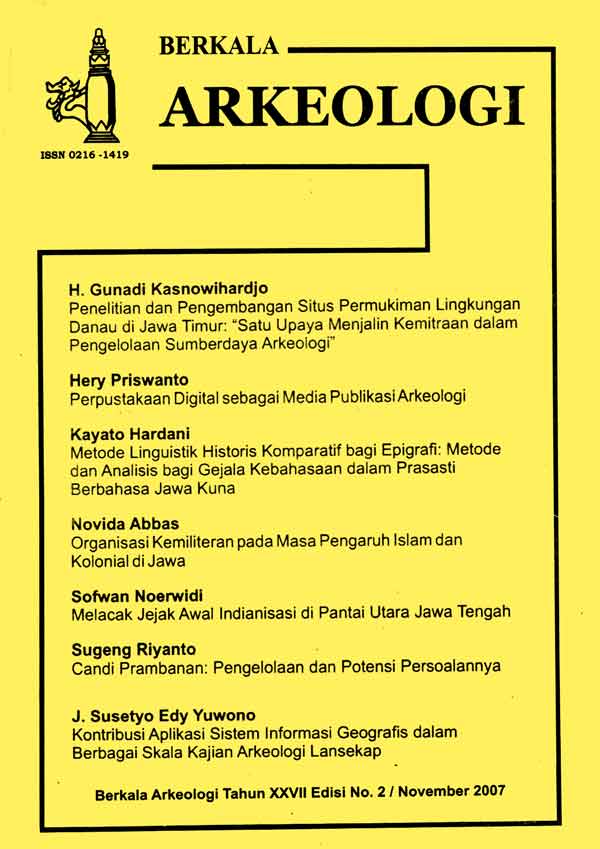ORGANISASI KEMILITERAN PADA MASA PENGARUH ISLAM DAN KOLONIAL DI JAWA
Main Article Content
Abstract
A number of military archaeological remains, which are found in various places in Indonesia, both in the form of monumental remains such as various local and colonial forts as well as non-monumental remains such as weapons, reflect the existence of the political, social and economic constellation that underlie the founding of these remains. Chronologically, although not necessarily in a linear order, military archaeological remains in the form of colonial fortresses originated from efforts to secure economic activities by placing beachheads in strategic places before evolving naturally into hardware to demonstrate their colonial political role. Meanwhile (or vice versa), the establishment of local or non-colonial fortresses was more of a response to counterbalance the development and spread of colonial strongholds in the past which were considered to threaten the power of local kings.
Article Details

This work is licensed under a Creative Commons Attribution-NonCommercial-ShareAlike 4.0 International License.
References
Catriantoro, DedykAgung. 2000. Abdi Dalem Juru Suranata: Tugas dan Peranannya di Keraton Kasunanan Surakarta. Surakarta. Skripsi pada Jurusan Sejarah Fak. Sastra UNS.
longh, D. de. 1950. Het Krijgswezen onder de Oostindische Compagnie. 's-Gravenhage. N.V. Uitgeverij W.P. van Stockum en Zoon.
Schrieke, B.J.O. 1955-1957. Indonesian Sociological Studies. Part I & II. The Hague. W. Van Hoeve.
Thorn, William. 2004 (Reprinted). The Conquest of Java. Singapore. Periplus Editions (HK) Ltd.

